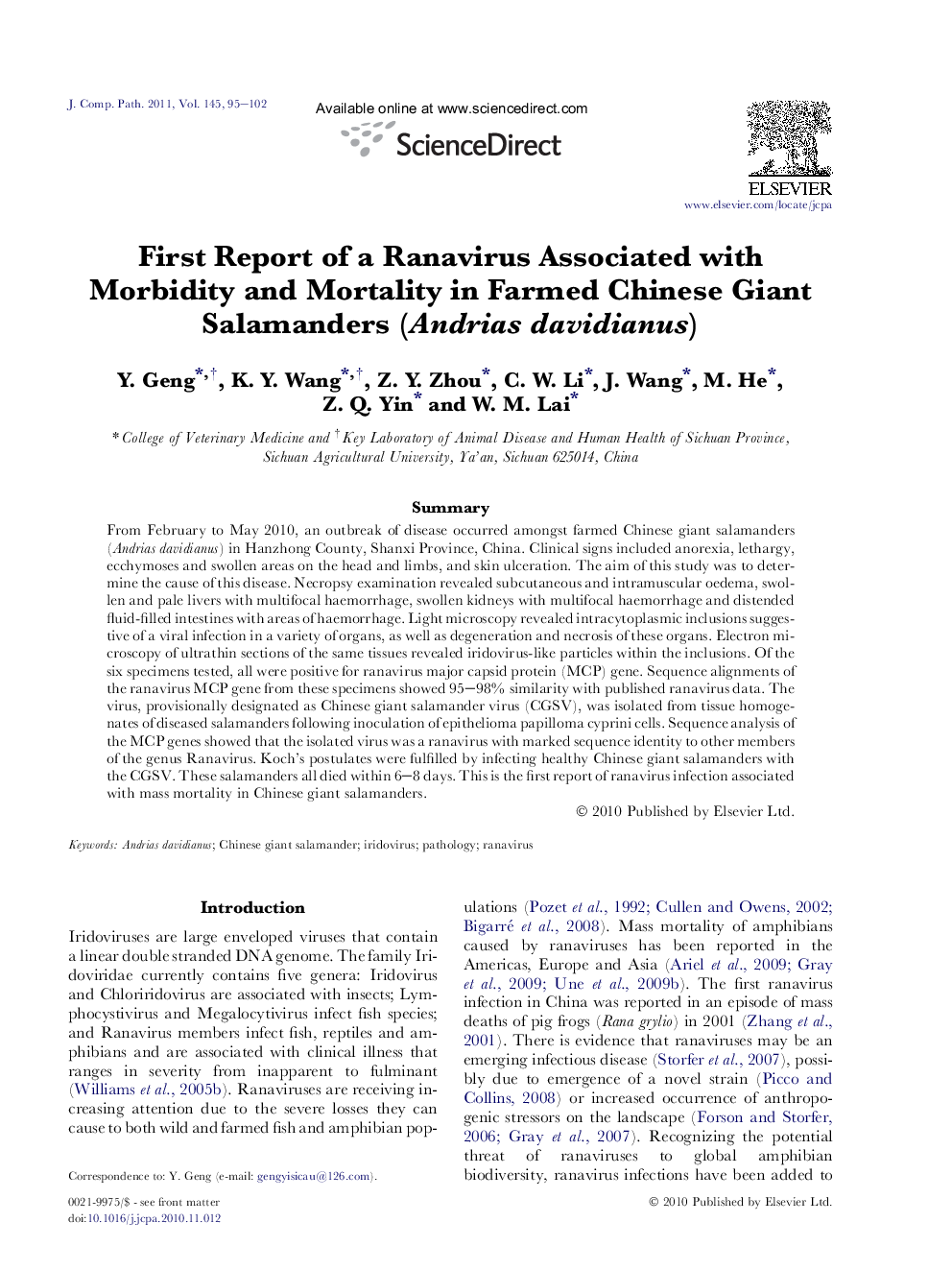| Article ID | Journal | Published Year | Pages | File Type |
|---|---|---|---|---|
| 2438018 | Journal of Comparative Pathology | 2011 | 8 Pages |
SummaryFrom February to May 2010, an outbreak of disease occurred amongst farmed Chinese giant salamanders (Andrias davidianus) in Hanzhong County, Shanxi Province, China. Clinical signs included anorexia, lethargy, ecchymoses and swollen areas on the head and limbs, and skin ulceration. The aim of this study was to determine the cause of this disease. Necropsy examination revealed subcutaneous and intramuscular oedema, swollen and pale livers with multifocal haemorrhage, swollen kidneys with multifocal haemorrhage and distended fluid-filled intestines with areas of haemorrhage. Light microscopy revealed intracytoplasmic inclusions suggestive of a viral infection in a variety of organs, as well as degeneration and necrosis of these organs. Electron microscopy of ultrathin sections of the same tissues revealed iridovirus-like particles within the inclusions. Of the six specimens tested, all were positive for ranavirus major capsid protein (MCP) gene. Sequence alignments of the ranavirus MCP gene from these specimens showed 95–98% similarity with published ranavirus data. The virus, provisionally designated as Chinese giant salamander virus (CGSV), was isolated from tissue homogenates of diseased salamanders following inoculation of epithelioma papilloma cyprini cells. Sequence analysis of the MCP genes showed that the isolated virus was a ranavirus with marked sequence identity to other members of the genus Ranavirus. Koch’s postulates were fulfilled by infecting healthy Chinese giant salamanders with the CGSV. These salamanders all died within 6–8 days. This is the first report of ranavirus infection associated with mass mortality in Chinese giant salamanders.
